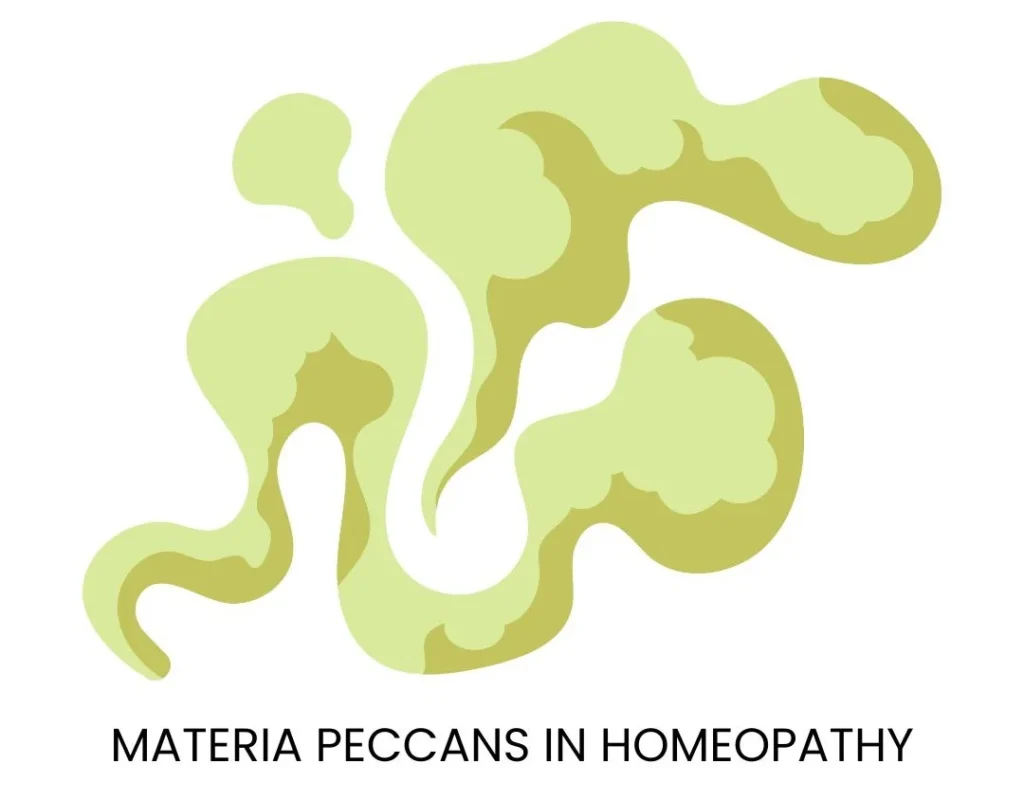In the early days of medicine, doctors believed that diseases were caused by some harmful substance inside the body—a theory known as Materia Peccans, meaning “offending matter.”
They thought that removing this so-called bad material, like blood, pus, or mucus, would cure the disease. But homeopathy sees disease very differently.
In homeopathy, disease is not caused by any material substance but by a disturbance in the body’s life energy, known as the vital force.
This vital force theory explains why homeopathy focuses on restoring inner balance rather than removing physical matter.
Let’s explore why homeopaths completely reject the outdated concept of Materia Peccans and how true healing begins by treating the root—our dynamic life force.

What is Materia Peccans?
Materia Peccans means “material cause of the disease.” This idea comes from old medical systems, where doctors believed that physical substances—like too much blood, phlegm, or bile—were the real cause of sickness.
For example,
People once believed that having too much blood in the body caused diseases.
So, they practiced things like bloodletting (removing blood from the body) to treat patients.
These methods were followed by a group of doctors known as the “physiological school.”
Why This Idea is Flawed
Old school doctors believed that if they removed the bad material (like pus, mucus, or blood), they could cure the disease.
They didn’t consider the deeper reason why the body produced that material in the first place.
They treated disease as something separate from the person’s inner vitality.
But homeopathy says this belief is incomplete and even harmful.
The Homeopathic View
Homeopathy teaches us that disease is not caused by any visible material.
Instead, it is a result of the disturbance in the body’s vital force—a dynamic, life-sustaining energy that keeps us healthy.
Hahnemann, the founder of homeopathy, strongly criticized the Materia Peccans theory. He said:
“The old school of medicine believed it might cure diseases in a direct manner by removing the imaginary material cause of the disease.”
According to homeopathy
- Disease starts with a disturbance in the vital force, not with any harmful material.
- Bacteria, viruses, pus, or mucus are the results of disease—not the root cause.
- True healing comes from restoring balance in the vital force, not just removing physical substances.
A Real-Life Example
Let’s say two people are exposed to the same bacteria. One falls sick, and the other remains healthy. Why?
Because the second person has a strong vital force that resists the disease.
So, it’s not the bacteria alone, but the internal state of the body (the host) that really matters.
Modern science also agrees: a healthy immune system can prevent disease even when exposed to harmful microbes.
Why This Matters to a Homeopath
Understanding Materia Peccans helps us see the difference between the old method of “treating symptoms” and the homeopathic method of “restoring inner balance.”
As a homeopath
- You treat the patient as a whole, not just their mucus, swelling, or fever.
- You aim to stimulate the body’s vital force with a remedy that matches the inner state.
- You understand that symptoms are signals—not enemies—to be understood, not suppressed.
Conclusion
The belief in Materia Peccans is outdated. It sees disease as a lump of matter to be removed.
But homeopathy goes deeper. It focuses on the vital force, on understanding the whole person, and on using dynamic remedies to restore health from the inside out.
This shift in thinking is what makes homeopathy unique, gentle, and truly holistic.
